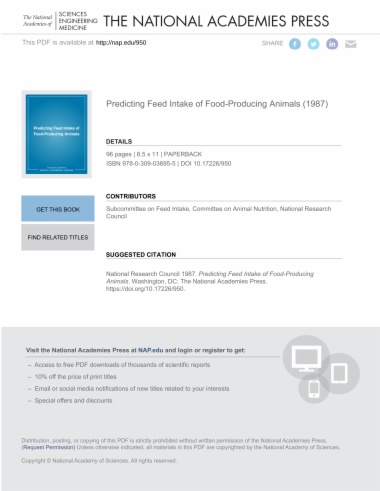

How much do animals eat? Why do eating patterns change? How do physiological, dietary, and environmental factors affect feed intake? This volume, a comprehensive overview of the latest animal feed intake research, answers these questions with detailed information about the feeding patterns of fishes, pigs, poultry, dairy cows, beef cattle, and sheep. Equations for calculating predicted feed intake are presented for each animal and are accompanied by charts, graphs, and tables.